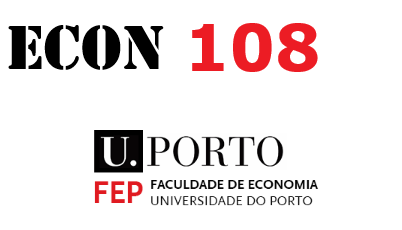Syllabus
Contents
Syllabus¶
Last updated: 28 January 2022 The content in this Jupyter Book is subject to change.
Course description¶
This is a course in time series econometrics with a focus on the models and methods used in empirical macroeconomics. The emphasis of the course will be on applying these tools in practice, rather than on than underlying econometric theory. To that end, we will try to implement everything covered in lectures by writing computer programs. The language of instruction used in the course is Python. No previous programming experience with Python is assumed. However, students are expected to quickly familiarize themselves with the basics of the language by working through the material and completing the exercises that will be provided. The course will be taught using a mixture of online lectures and hands-on programming sessions.
Course outline¶
Please note that the following outline is preliminary and may be modified if needed.
Introduction to time series analysis, basic concepts and models
time series vs cross-section
stationarity and ergodicity
white noise, martingales, martingale difference, AR, MA processes
autocovariance, autocorrelation and partial autocorrelation
Review of the multivariate normal distribution
marginal, conditional, joint distributions
useful properties
Review of maximum likelihood estimation
log-likelihood function, score, Hessian
identification
optimization
asymptotic properties
quasi-maximum likelihood
ARMA models
estimation
model selection
forecasting
Nonstationarity
Unit root tests
ARIMA models
Conditional heteroskedasticity
ARCH, GARCH models
VAR models
estimation
forecasting
State Space models
Kalman filter
identification
estimation
forecasting
Granger causality
unconditional
conditional
TBD other topics:
structural models
spectral analysis
regime switching models
Bayesian methods
Textbooks and other readings¶
There is no required textbook for this course. All necessary material (slides, lecture notes and programming demos) will be posted on the course web site. There are several freely available online books that I will sometimes make reference to, but none of them is mandatory:
Econometrics (textbook by B. Hansen, chapters 14, 15, 16)
Advanced Data Analysis from an Elementary Point of View (textbook by C. Shalizi, chapter 23)
Econometric Theory and Methods (textbook by Davidson and MacKinnon, chapters 13, 14)
Introduction to Python for Econometrics, Statistics and Numerical Analysis (notes by K. Sheppard)
Python Data Science Handbook (book by J. VanderPlas, chapters 2, 3, 4)
Important course information¶
Class meetings will be held on Zoom. You will need a microphone and webcam (you need not always have your webcam on, but you will want to be able to be visible at times).
Course goals¶
Obtain a basic knowledge of time series theory and methodology.
Learn how to analyze time series data by exploratory analysis, model identification and fitting.
Learn how to use Python to perform such analysis, by using existing libraries, as well as by writing own code to implement specific time series tasks.
Learn useful research tools and practices.
Grading¶
Grades will be determined as follows: homework assignments (55%), midterm project (15%), final project (30%).
Late Submissions¶
No.
